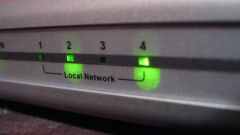Instruction
1
Start Opera and go to its main menu. Select "General settings" (Preferences) and go to the "Advanced" tab (Advanced). Scroll to the item "Network" (Network) and click on the "Proxy" (Proxy Servers). Remove all the settings and uncheck, then click "Apply" and close the window. Restart your browser for these settings to take effect.
2
Open the settings of the Internet browser Mozilla Firefox and navigate to "Basic" (General). Select "connection Settings" (Connection Settings) and open the Manual Proxy Configuration window. Delete the data about the name server and the port number of the proxy. Click OK, and then activate operation mode "No proxy". Save the settings.
3
Go to the settings menu of the Google Chrome browser and navigate to the "Advanced" tab. Find "to Change the settings for the proxyserver" under "Network" and click on the appropriate button. Remove all the settings and uncheck use a proxyserver. Click "Apply" and close the window.
4
Go to menu "tools" (Tools) in Internet Explorer and select "Internet options" (Internet Options). Click on the tab "Connection" (Connections) and select "configure local area network" (LAN Settings). To delete a proxy server, you must remove the check mark next to "Use proxy server" (Use a proxy server). Click "Save" and restart the browser.
5
Disable proxy server that was configured in Netscape Navigator 4. Run the program and click "edit" (Edit) and click the tab "Settings" (Preferences). Find the menu of the proxyserver in the connections section, and then delete all the ports and servers. If you set up proxy in Konqueror, then you can remove it in settings by unchecking the relevant check boxes under the Proxies.


